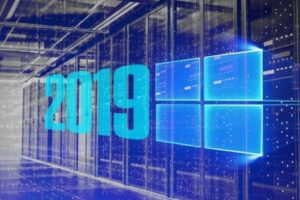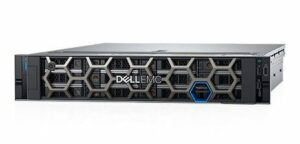
This blog is based on content I co-authored with Karthik Konaparthi (find him on LinkedIn and Twitter @KKonaparthi), the Product Manager for Dell EMC Solutions for Microsoft Azure Stack HCI.
For most IT leaders it’s a question of when, not if, you will move to Windows Server 2019 (WS2019). The latest Microsoft Windows Server release and the foundation of their newly re-named Azure Stack HCI program further expands the great strides forward in software-defined data centers made with WS2016.
If WS2016 handles your current workloads effectively, it may make sense to continue running 2016 on your Microsoft Storage Spaces Direct (S2D) clusters for the time being. However, for those of you who are expanding your S2D cluster and/or looking to take advantage of the rich feature set of 2019, you’re likely considering an upgrade…but then the question becomes “when”? Different factors impact the timing of your upgrade, such as budget, expertise and space constraints. How you choose to upgrade is also a major factor in timing.
If the When Wasn’t Hard Enough, the How Is Even Harder

Dell EMC is an industry leader in Microsoft software-defined data center (SDDC) technologies and we’re here to help. Our Solutions for Microsoft Azure Stack HCI, including Microsoft Storage Spaces Direct (S2D) Ready Nodes, are the most comprehensively designed, tested, and supported solutions for customers looking to adopt Microsoft S2D and the broader Windows Server technology.
If you currently have a WS2016 environment on Dell EMC’s Microsoft S2D Ready Nodes, there are two options to move to WS2019: migrate or upgrade. Migration makes sense if you are expanding your data center footprint and can add a net new cluster. If you’re not adding any new hardware, then the alternative is to perform an OS upgrade.
Migration
A new S2D Ready Node cluster is stood up, virtual machines are migrated to the new cluster non-disruptively, and the old cluster is then re-deployed with WS2019. Your data and workloads are not at risk because they’re moved one at a time on any timetable you choose.
Upgrade
If you lack the space or budget for expansion, you can perform an upgrade on your existing S2D Ready Node cluster. However, upgrades can get tricky. Extensive planning and attention to detail are required to execute a successful upgrade, and the risk to business continuity increases. When underlying code for a software-defined storage solution is changed, the integrity of the data store could be impacted.
As this Microsoft article cautions, an in-place upgrade could lead to unforeseen issues that are difficult to troubleshoot. Instead, Microsoft recommends a rolling upgrade, following the “Clean-OS installation while VMs are running or stopped” method. That said, there is a high-degree of complexity in this approach and most standard support contracts do not cover troubleshooting a failed or partial upgrade attempted by the customer.
DIY vs. Outside Help
 For customers choosing to migrate to WS2019, doing it yourself is a perfectly suitable option if you have the right in-house skillsets and time is less of a factor.
For customers choosing to migrate to WS2019, doing it yourself is a perfectly suitable option if you have the right in-house skillsets and time is less of a factor.
However, for customers choosing to upgrade, the advice is a little different. As previously mentioned, the process of upgrading an existing cluster to WS2019 is inherently risky. For this reason, it is highly recommended that you enlist the help of an experienced service partner.
Dell Technologies Windows Server 2019 Custom Upgrade Service
When Dell EMC updated our own S2D Ready Nodes to the new WS2019, we anticipated that our customers would need help, and so partnering with Microsoft, we worked to create a fully tested, validated, and supported Windows Server 2019 custom upgrade service for our customers.
The WS2019 custom upgrade service as summarized in recent guidance from Dell EMC includes removing each node from the cluster, installing WS2019 fresh on each node, and rejoining the new WS2019 node to the cluster. The process was extensively tested by the Dell EMC engineering team, working closely with Microsoft and Dell Technologies Services, and is an industry first –100% unique in the market – underscoring our deep commitment and investment to being a leader in the Microsoft Azure Stack HCI program.
Windows Server 2019 upgrades are performed by the same engineers who deploy new Microsoft S2D Ready Nodes globally; they have deep expertise in the underlying technology. Starting from your request for a quote, you will receive comprehensive planning and project support. Then leave the heavy lifting to your deployment engineer who will meticulously perform the detailed steps required to successfully bring your cluster through the upgrade.
The new custom upgrade service from Dell Technologies Services makes the “when and how should we move to Windows Server 2019?” decision easier.
Summary
Dell EMC is the right partner as you adopt Windows Server 2019 in your organization. Dell EMC offers a full range of infrastructure solutions for WS2019, including the Dell EMC Solutions for Microsoft Azure Stack HCI. Dell Technologies Services is here to help you get the most out of your technology investment with ProConsult, ProDeploy, ProSupport, and unique targeted services such as the Windows Server 2019 Custom Upgrade service discussed in this blog. Contact your Dell EMC representative to discuss upgrading your Windows Server OS today.
